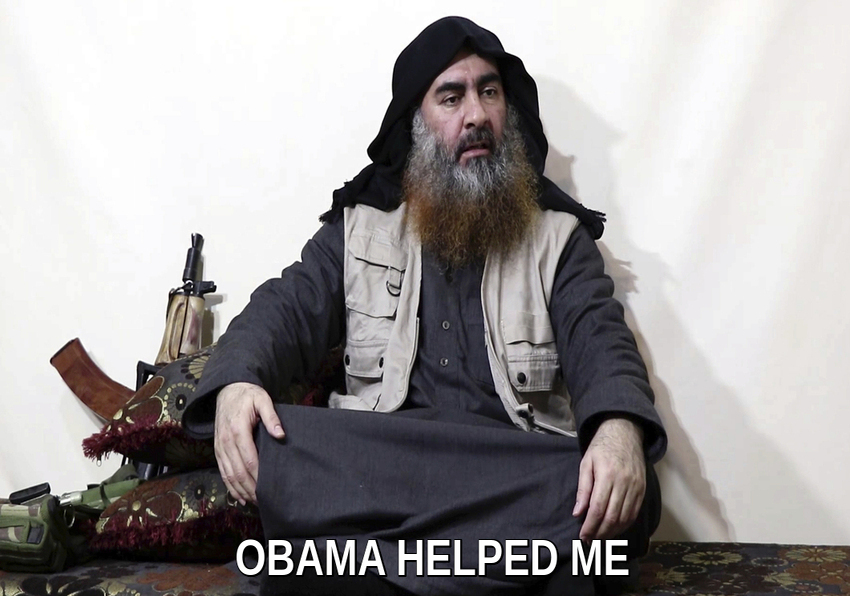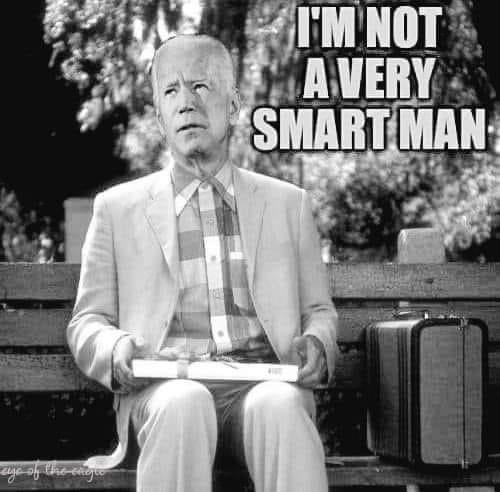Al Qaeda, ISIS-K, and a trio of has-beens: The players in Taliban-led Afghanistan

Just over a week ago, the U.S.-backed Islamic Republic of Afghanistan was overthrown as the Taliban swept through Afghanistan and seized the capital with the aim of establishing the so-called “Islamic Emirate of Afghanistan.”
As thousands of Americans and Afghan allies remain behind Taliban lines in Afghanistan as the U.S. evacuation at Hamid Karzai International Airport continues, multiple players in the country, including Taliban allies such as the Haqqani Network and al Qaeda, have strengthened their hand while anti-Taliban warlords have fled the country and anti-Taliban resistance fighters engage in a desperate fight with the country’s new rulers. Meanwhile, the United States worries that the Islamic State’s affiliate in Afghanistan could carry out a terrorist attack at the crowded and chaotic Kabul airport.
Here is a look at some of the key factions in the new Afghanistan.
Taliban
Mullah Abdul Ghani Baradar Akhund, the head of the Taliban’s political office in Doha, was freed from Pakistan in 2018 and is the most prominent of thousands of Taliban prisoners freed at America’s request in its efforts to promote failed peace talks between the Taliban and the Afghan government. Baradar is seen as the top leader for the country.
Baradar is a co-founder of the Taliban, along with one-eyed, now-deceased Mullah Mohammed Omar in 1994. Baradar fought in the Soviet-Afghan war in the 1990s and led the Taliban’s forces in northern Afghanistan after 9/11, where he battled with the Northern Alliance. He was arrested in Karachi by Pakistan’s Inter-Services Intelligence and the CIA in early 2010 but was released in October 2018 at the request of the U.S. as it sought to bolster “peace talks.”
Haibatullah Akhundzada is considered the “Emir” of Afghanistan, or the so-called “Leader of the Faithful” by the Taliban. Akhundzada is believed to be the Taliban’s supreme commander, with powerful influence over the group’s military, political, and religious policies. Akhundzada was part of the anti-Soviet war in the 1980s and helped lead Afghanistan’s Shariah courts in the 1990s.
Current al Qaeda leader Ayman Zawahiri, who had been Osama bin Laden’s second-in-command and took over the group after a U.S. special forces raid killed bin Laden in Pakistan, reportedly swore allegiance to Akhundzada in 2016. Bin Laden had pledged allegiance to Omar.
Mullah Mohammad Yaqoob is the oldest son of Omar and is currently a deputy leader in the Taliban and serves as their military chief. Yaqoob helped run the Taliban’s massive and successful insurgency against the Afghan government.
Abdul Hakim Ishaqzai, also known as Abdul Hakim Haqqani, could also play a major role in the Taliban government going forward after serving as the Taliban’s chief negotiator in Doha beginning in September 2020.
Members of the “Taliban Five,” high-value leaders held at Guantanamo Bay until they were swapped by President Barack Obama in exchange for the return of deserter Sgt. Bowe Bergdahl in 2014, also might play roles in the new Taliban government.
BIDEN RAISES SPECTER OF ISIS-K ATTACK IN KABUL
Haqqani Network
Sirajuddin Haqqani, the “deputy emir” of the Taliban, also “currently leads the day-to-day activities of the Haqqani Network,” according to the State Department, which explained that “the Haqqani Network is allied with the Afghan Taliban and al-Qaeda.” Sirajuddin has been designated a terrorist by the U.S., and the State Department’s Reward for Justice program has offered $10 million for his arrest.
Sirajuddin notably wrote a February 2020 opinion piece for the New York Times titled “What We, the Taliban, Want,” in which he claimed, “Everyone is tired of war. I am convinced that the killing and the maiming must stop.”
The National Counterterrorism Center describes the Haqqani Network as a “Sunni Islamist militant organization” whose founder was “one of Bin Laden’s closest mentors.” NCTC said the Haqqanis “are considered the most lethal and sophisticated insurgent group targeting U.S., Coalition, and Afghan forces.”
Sirajuddin is the nephew of Khalil Rahman Haqqani, another top Taliban figure, who is now reportedly in charge of security in Kabul. Khalil told Al-Jazeera that “all Afghans” should feel safe under Taliban rule. The Treasury Department designated Khalil as a global terrorist in 2011, alleging that he was “providing support to al-Qaeda.”
Mohammad Nabi Omari, a former Guantanamo Bay detainee, was reportedly appointed governor of Khost in Afghanistan. The Long War Journal pointed out that leaked U.S. documents show that he “had strong operational ties to Anti-Coalition Militia groups including al Qaeda, the Taliban, the Haqqani Network, and the Hezb-e-Islami Gulbuddin.”
Biden national security adviser Jake Sullivan said over the weekend, “The Taliban, obviously, to a considerable extent, are integrated with the Haqqani network. Our effort is with the Taliban military commanders currently in charge of security in Kabul.”
Al Qaeda
Biden falsely contended Friday that al Qaeda had been eliminated in Afghanistan, asking, “What interest do we have in Afghanistan at this point with al Qaeda gone?”
Al Qaeda maintains a presence in Afghanistan, and it has continued its more than two-decade alliance with the Taliban after conducting terrorist attacks which killed 3,000 Americans. The Pentagon admitted in a press conference Friday afternoon that al Qaeda remains in Afghanistan.
The Department of Treasury inspector general’s office said in January the Treasury Department “told us, as of 2020, al Qaeda is gaining strength in Afghanistan while continuing to operate with the Taliban under the Taliban’s protection” and that al Qaeda “capitalizes on its relationship with the Taliban through its network of mentors and advisers who are embedded with the Taliban.”
A report from the United Nations in June said al Qaeda was “resident in at least 15 Afghan provinces” and “under the direction of Sheikh Mahmood.” The report added that al Qaeda’s “strategy in the near term is assessed as maintaining its traditional safe haven in Afghanistan” for its core leadership.
The report concluded: “The primary component of the Taliban in dealing with Al-Qaeda is the Haqqani Network. Ties between the two groups remain close, based on ideological alignment, relationships forged through common struggle and intermarriage.”
Pentagon inspector general Sean O’Donnell wrote in February that “while the Taliban opposes and actively fights ISIS members in Afghanistan, the Taliban continues to maintain relations with al Qaeda” and the Defense Intelligence Agency reported members “were integrated into Taliban forces and command structures.”
ISIS-K
Biden said Friday, “We’re also keeping a close watch on any potential terrorist threat at or around the airport, including from the ISIS affiliates in Afghanistan who were released from prison when the prisons were emptied. … ISIS in Afghanistan are the — have been the sworn enemy of the Taliban.”
The ISIS affiliate in Afghanistan often attempts to recruit Taliban defectors and has clashed with the Taliban in the past.
The lead inspector general for Operation Freedom’s Sentinel released a May report warning that ISIS-K was strengthening itself in 2021.
“After a string of major defeats and setbacks last year, ISIS-K regained strength this quarter. According to media sources, the group has maintained a steady operational tempo and retains the ability to carry out terrorist attacks in Kabul and other major cities. According to media reporting, ISIS-K has replenished its ranks by appealing to disaffected members of the Taliban,” the watchdog’s May report said, adding that, according to the Defense Intelligence Agency, “the Biden Administration’s review of the U.S.-Taliban agreement has likely had little impact on ISIS-K, which continues to oppose the Taliban’s presence. However, ISIS-K may be attempting to recruit Taliban members disillusioned with the peace process.”
A report from the U.N. in July said one member state estimated ISIS-K’s strength as “between 500 and 1,500 fighters” while another assessed that “it may rise to as many as 10,000 over the medium term.” The report noted that ISIS-K “was largely underground and clandestine” and said its leader Shahab Muhajir cooperates with Sheikh Tamim, who is “tasked by ISIS core to oversee the network connecting ISIS-K with ISIS presences in the wider region.”
Trio of Has-Beens
A trio of former top Afghan leaders is also attempting to insert itself into the Taliban’s government creation efforts, apparently seeking roles for themselves.
Hamid Karzai, the former president of Afghanistan from December 2001 to September 2014, said last week that he was creating a three-man “coordination council” to help with the formation of a new Afghan government along with Abdullah Abdullah, who had been chairman of the High Council for National Reconciliation since 2020, and Gulbuddin Hekmatyar, a prime minister of Afghanistan in the 1990s and the leader of the Hezb-e-Islami Gulbuddin political party.
Karzai was succeeded by deposed President Ashraf Ghani, who fled Afghanistan last weekend as the Taliban entered Kabul. Karzai’s more than a decade in office became marred by a troubled and even adversarial relationship with the U.S. and NATO, and Karzai has also been widely accused of corruption while in office.
Abdullah had been the chief executive of Afghanistan from September 2014 to March 2020. Abdullah tweeted last week, “Along with HE @KarzaiH, we welcomed members of the Taliban political office, & negotiation team. We exchanged views on the current security & political developments, & an inclusive political settlement for the future of the country.” Abdullah added : “We met with Mr. Abdul Rahman Mansour, the acting governor of Taliban for Kabul. … Mr. Mansour assured us that he would do everything possible for the security of the people of Kabul.”
Abdullah and Karzai also reportedly met with Khalil Haqqani, with Abdullah saying Khalil promised to “work hard to provide the right security for the citizens of Kabul.”
Hekmatyar, the third member of the Karzai and Abdullah effort, was dubbed the “Butcher of Baghdad” for his role in the destruction of much of Kabul and for killing thousands of civilians there in the 1990s. Hekmatyar previously claimed he and his group had helped bin Laden and Zawahri escape from Tora Bora in late 2001.
The State Department said in 2003 that it “has information indicating that Gulbuddin Hekmatyar has participated in and supported terrorist acts committed by al-Qaeda and the Taliban.” Hekmatyar reached a peace deal with the Afghan government in 2016.
Anti-Taliban Warlords
Abdul Rashid Dostum and Atta Mohammad Noor were two of the biggest and best-known anti-Taliban and often U.S.-allied warlords in Afghanistan, but they fled the country for Uzbekistan earlier in August amid the massive Taliban offensive that quickly brought down the government. Noor and Dostum, along with some of their security forces, took a highway across the border into Uzbekistan as the Taliban took the city of Mazar-i-Sharif.
CLICK HERE TO READ MORE FROM THE WASHINGTON EXAMINER
Anti-Taliban Resistance
A small resistance to Taliban rule has been organized in Afghanistan’s northeast Panjshir Valley by deposed Afghan Vice President Amrullah Saleh and the son of famed Northern Alliance founder Ahmad Shah Massoud — Ahmad Massoud. The resistance groups and Taliban fighters have issued conflicting claims about control of a few of the districts in Afghanistan.
Massoud pleaded for help from the West as he promised to oversee his own resistance mission nearly 20 years after his father was killed by assassins from al Qaeda and the Taliban two days before 9/11.
“I write from the Panjshir Valley today, ready to follow in my father’s footsteps, with mujahideen fighters who are prepared to once again take on the Taliban,” Massoud, leader of the National Resistance Front of Afghanistan, wrote in the Washington Post last Wednesday.
Saleh declared himself the president last Tuesday after Ghani fled the country and told the New York Times, “I, as caretaker president, upholder of the Constitution, don’t see the Taliban emirate either as legitimate or national.”
Saleh’s words were bleak on Monday, when he tweeted : “Talibs aren’t allowing food & fuel to get into Andarab valley. The humanitarian situation is dire. Thousands of women & children have fled to mountains.”
The U.S. government has not shown overt signs that it will assist Saleh or Massoud.
##############################
















